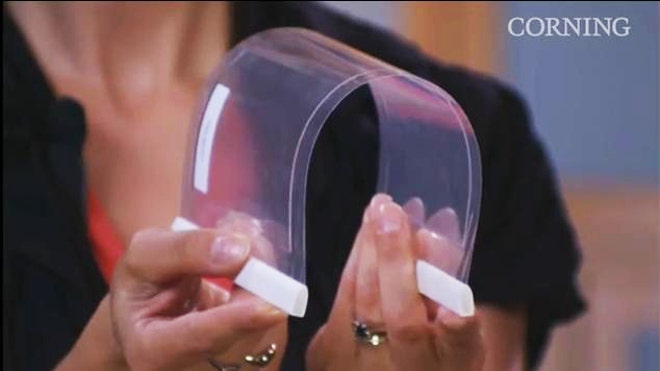Read more: http://www.foxnews.com/scitech/2012/06/04/corning-reveals-astounding-roll-up-willow-glass-for-flexible-displays/#ixzz1wqb57AOO
Glass as thin and as flexible as a sheet of paper that can be printed on rolls just like a newspaper will be available to phone makers as soon as this month, said Dipak Chowdhury, head of Corning’s ultra-flexible thin-glass project Willow.
“It’s seriously built like paper,” Chowdhury told FoxNews.com, “and behaves just like that.”
'Picture glass as thin as copy paper -- and it behaves just like that.'
- Dipak Chowdhury, program director for flexible glass at Corning
Corning unveiled the new Willow Glass Mon., June 5; Chowdhury will deliver a presentation on the technology at the Society for Information Display’s Display Week 2012 conference in Boston.
Ordinary displays in notebooks or smartphones are made of glass sandwiches, usually three sheets of the stuff measuring a bare 0.7 or 0.5 millimeters in thickness. At 0.1 millimeters thin, Corning’s brand new Willow glass is as thin as the finest human hair -- and will makes those smartphone sandwiches as much as 7 times thinner.
Glass isn’t inherently a rigid substance, Chowdhury explained. When it gets superthin, it becomes flexible just like any substance.
“If you take glass as thick as a business card, it’s not flexible. Think about the same business card and make it seven times thinner -- it works like paper,” he said. Likewise, a phone book is solid, but the individually pages in it are easily rolled.
“Can you roll a ream of paper? And those pages aren’t even attached to each other,” explained Alfred Poor, founder of the HDTV Almanac and a long-time monitor industry insider.
“The Holy Grail has been to get to roll to roll manufacturing for displays,” he told FoxNews.com.
Willow Glass won’t immediately lead to roll-up iPhones, Poor was quick to note. The entire display industry is built for inflexible sheets of glass, made in massive, astronomically expensive plants.
“It costs billions of dollars to build an LCD plant these days,” Poor said.
But several of the layers in those smartphone sandwiches could immediately be replaced with Willow Glass, meaning your next iPhone or Galaxy or Nexus or whatever could be lighter, thinner, and potentially cheaper.
Why are there several layers? Only the top surface is protective. The interior layers are coated with electronics or other elements to make the display work.
Think of a potato chip bag, Poor explained. Such bags are made of plastic and printed with both a protective metal foil layer and a colorful logo on a roll to roll process. Likewise, several layers in a display are printed on.
“But instead of printing logos, they print a backplane, made of silicon,” Poor said.
Indeed, Chowdhury said that the company has been working with suppliers and research labs to develop new processes for printing, cutting and handling the immense wrapping-paper-like rolls of glass.
Display giant Dai Nippon Printing Co (DNP) will demonstrate touch sensors and color filters -- two essential components for modern smartphones -- printed onto Willow Glass, Chowdhury said.
“It was a technical hurdle, but we conquered this hurdle,” he told FoxNews.com.
DNP currently supports roll to roll printing on ultra thin plastic, similar to those potato chip bags. Alexia Allina with Frito-Lay told FoxNews.com the average bag is about 0.06 millimeters thin. But plastic is far from ideal for smartphones, Poor said.
“Plastic substrates are flexible but lack a lot of the qualities you need: They tend not to be smooth enough, for one thing. One of the advantages of glass is it can be microscopically smooth,” he told FoxNews.com.
Any roughness can cause defects in the display, he said. Plastic is also permeable, notably to water -- a huge problem for some types of display.



No comments:
Post a Comment